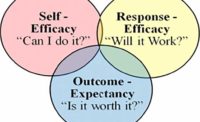For example, if a safety training process increases the use of personal protective equipment (PPE) on-the-job and at home, stimulus generalization has occurred. Response generalization occurs when an increase in one safety behavior, such as vehicle safety belt use, is accompanied by an increase in another task-related behavior, perhaps turn signal use.
You can see that generalization is a desired goal of safety efforts. Safety managers hope safe operating procedures used in one situation will spread to other situations, including employees' homes (stimulus generalization), and to other procedures or behaviors (response generalization). Let's use theory and research to discuss ways to increase generalization.
Case study: Generalizing pizza delivery safety
When behavioral scientists evaluate the impact of an intervention program they typically measure the quantity and/or quality of a target behavior before, during, and after the intervention. But this method often can not be used to evaluate generalization because only one situation is usually observed, and only the behavior(s) targeted by the intervention is measured. A few years ago, Tim Ludwig (a former graduate student) and I measured changes in a behavior that was not targeted by a safety intervention, and the results were instructive.Our goal was to boost the safety belt use of pizza deliverers working out of two stores in southwest Virginia. Before, during, and after a safety belt campaign, we unobtrusively measured the deliverers' safety belt use when entering and exiting the store parking lots. Results showed remarkable benefits of the safety belt intervention.
We also discovered response generalization. Observing the drivers' daily use of turn signals, we found that the use of both safety belts and turn signals increased after the safety belt campaign (which did not include any mention of turn signal use). We concluded that certain aspects of the intervention process promoted a sense of personal control, commitment, and group ownership, which theoretically should promote generalization. Tim's Ph.D. dissertation, conducted two years later, verified these conclusions.
This safety belt campaign included a one-hour group meeting on the value of vehicle safety belts and ways to support each other's use of safety belts. Buckle-up promise cards were distributed to each participant and signed as a personal commitment to buckle up consistently for two months. Signed promise cards were entered into a random drawing for a $20 sweatshirt. Everyone signed the pledge. In addition, the group decided to do a few things on-the-job to promote safety belt use. Specifically, buckle-up reminder signs were posted in the two stores, and dispatchers agreed to remind drivers to buckle up before making their deliveries.
For his Ph.D. dissertation research, Tim varied the safety intervention strategies between two pizza stores to test whether the choice, commitment, and involvement aspects were critical to obtaining generalization. Goal-setting and feedback were employed at each store to increase the target behavior-complete vehicle stopping at intersections. During a group discussion among employees at one store about the benefits of always stopping completely at intersections, the manager noted that he had observed 55 percent complete stops during the previous week. The group selected a goal of 75 percent for each of the following four weeks, and the manager agreed to post bi-weekly percentages obtained from his periodic observations of vehicles leaving the parking lot.
Goals and feedback were used at the second pizza store, too, but the process of implementing these behavior change techniques was different. Dr. Ludwig and the store managers lectured about the benefits of complete intersection stopping, instead of introducing the procedure through interactive discussion. The manager then assigned the same goal that was chosen by employees at the other store. He also posted bi-weekly percentages of safe stopping from his daily observations.
Buy-in is required
Here's the bottom line: Pizza deliverers at both stores significantly increased their percentage of complete intersection stops during the intervention period, but response generalization was observed only among employees who had a say in discussions and goal-setting.You see, our field observers recorded unobtrusively from store windows across the street whether the pizza deliverers were buckled up and used their turn signals when leaving the parking lot. Only the drivers who chose their own safe stopping goal following an interactive discussion significantly increased their use of both safety belts and turn signals during the intervention and follow-up phases.
This study demonstrates that safety generalization is most likely to occur when people feel a sense of commitment and ownership for the goals of a behavior-based intervention process. When this happens, some people remind themselves to perform the target behavior in various situations (stimulus generalization) and to perform other safe behaviors related to the target behavior (response generalization).
The important lesson here is that people who believe in the mission of a safety intervention are usually willing to extend their commitment to safety across situations and behaviors. Buying into the mission, they recognize the inconsistency and futility of limiting safety to certain conditions and behaviors. This leads to stimulus and response generalization.
How to get commitment
The key to gaining commitment and ownership is involvement. When we participate in discussing the rationale and goals of an intervention process we are apt to develop internal justification and support for the intervention process-and beyond.Slight differences in the way Tim Ludwig and the store managers implemented the behavior-based intervention apparently resulted in different feelings of personal commitment and group ownership. Involving employees in a discussion of the intervention process, rather than lecturing, and allowing them to choose a group safety goal instead of assigning one, led to differences in response generalization.
Obviously, more research is needed to develop intervention procedures for increasing safety generalization. But at this point it seems safe to assume that individual and group involvement are key to increasing personal commitment and group ownership of an intervention process. When these psychological states are achieved, the impact of an intervention process is more likely to generalize across behaviors and situations.
